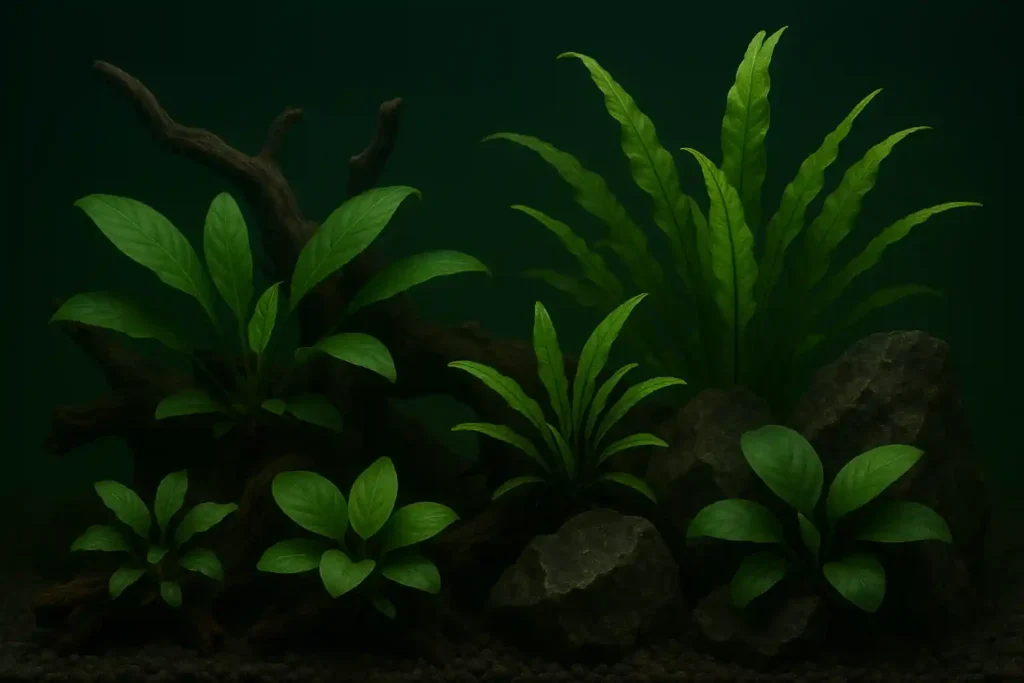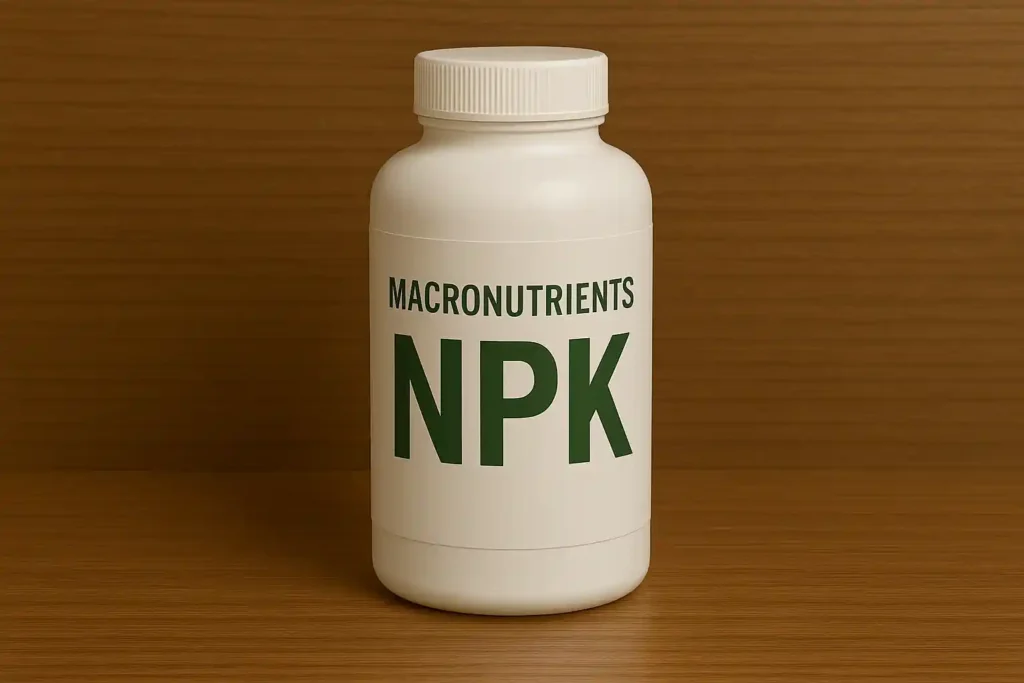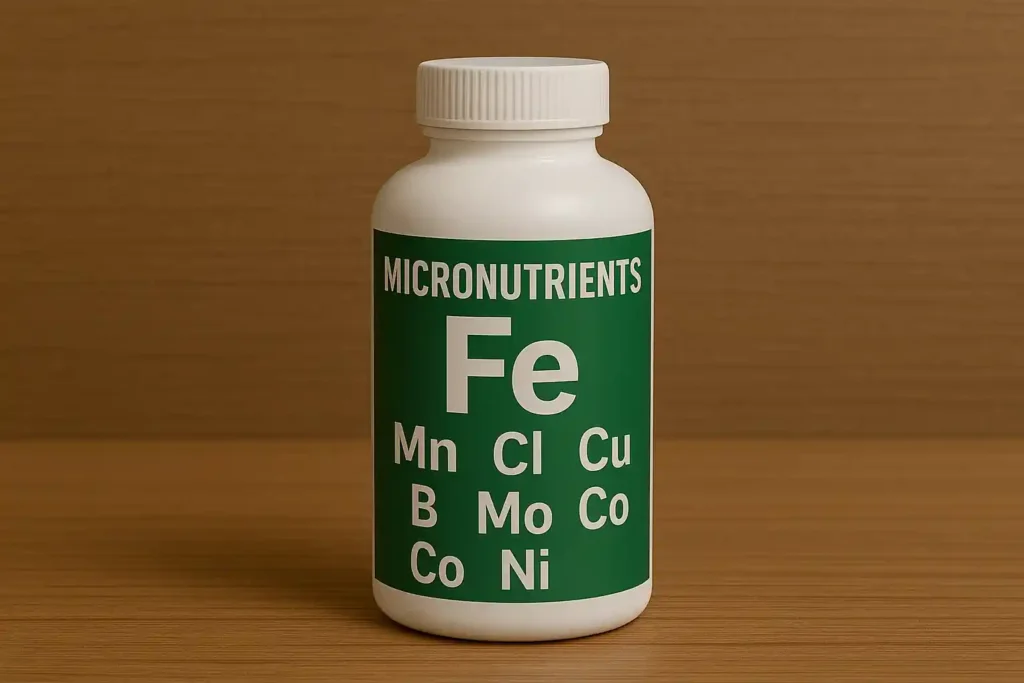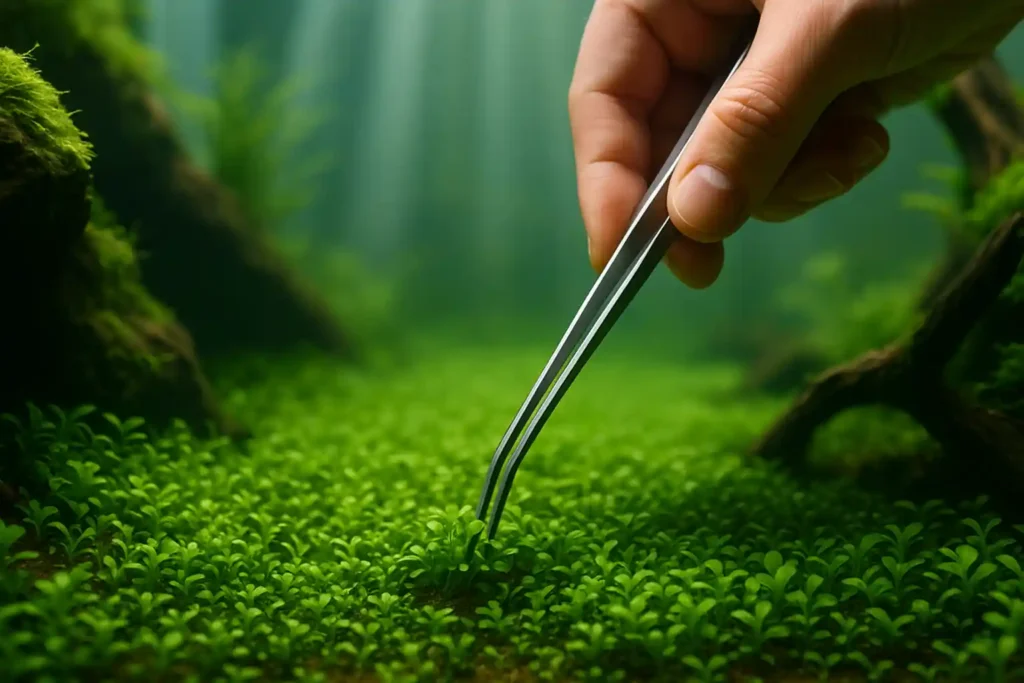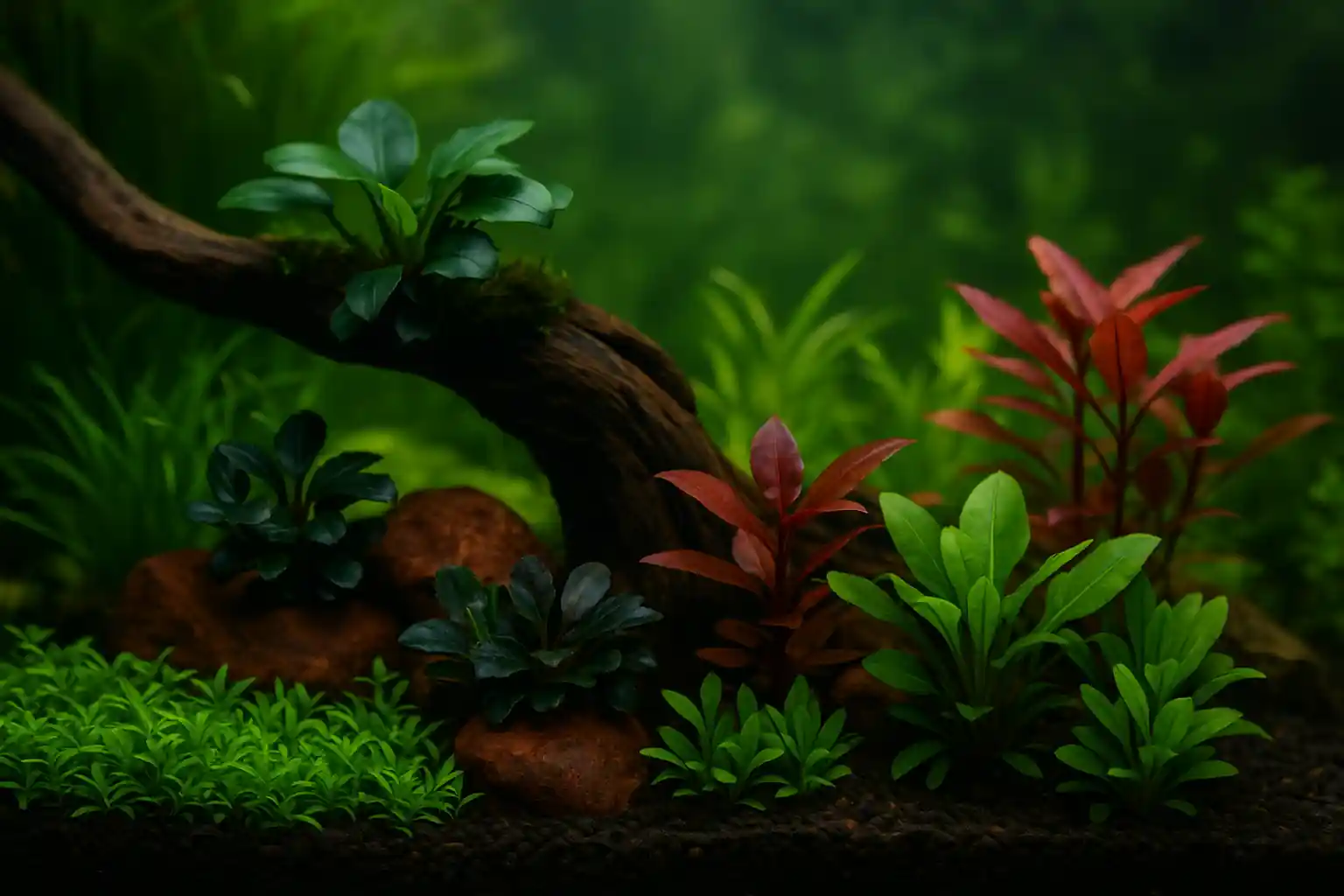
Aquarium Midground Plants: Full Guide to Placement, Best Species & Styling Tips
Introduction
Aquarium midground plants play a crucial role in both structure and flow, making them indispensable in any well-designed aquascape.
A beautifully planted aquarium relies on balance—and aquarium midground plants are at the heart of that harmony. These plants act as a bridge between your eye-catching foreground carpet and the taller background vegetation, providing depth, contrast, and natural transitions. Without a strong midground, even the most well-designed tank can feel flat or unfinished.
Whether you’re aiming for a classic Nature Style aquascape or a flowing jungle look, selecting and positioning the right aquarium midground plants will elevate your layout. In this guide, we’ll walk through the top species, practical placement tips, and how to care for your midground zone like a pro.
What you’ll learn in this lesson
- What defines aquarium midground plants
- How to choose the best species for your aquascape
- Key differences between low-tech and high-tech setups
- Detailed profiles of the top aquarium midground plants
- Practical tips for planting and placement
- How to troubleshoot aquarium midground plant issues
🌱 What Are Aquarium Midground Plants?
Midground plants are those that typically reach a height between 10 and 25 cm, filling the space between the low-growing carpeting plants at the front and the tall background plants at the back of your aquascape. Their job is both visual and structural: they provide contrast, hide equipment, and create depth in the scape.
These plants vary in form—some are bushy and low-spreading like Cryptocoryne wendtii, while others are epiphytic and upright, like Java Fern or Anubias barteri. A good midground layout adds layers and dimension, leading the viewer’s eye from front to back seamlessly.
Foreground vs. Midground vs. Background (Quick View)
| Layer | Height Range | Function | Common Plants |
|---|---|---|---|
| Foreground | 1–5 cm | Creates depth & visual base | Monte Carlo, HC Cuba |
| Midground | 10–25 cm | Transitional layer, texture, hiding gear | Crypts, Anubias, Java Fern |
| Background | 30+ cm | Backdrop, volume, visual height | Vallisneria, Rotala, Ludwigia |
🌟 Why Use Midground Plants in Your Aquarium?
Midground plants are often overlooked by beginners, but they’re essential for a complete layout. Here’s why they matter:
Visual Flow
Midground plants create a natural progression from the front to the back of the tank, avoiding harsh lines and improving overall composition.
Habitat & Shelter
They offer cover for shy fish and shrimp, breaking lines of sight and creating a more secure, stress-free environment.
Equipment Masking
Use tall midground species to hide filter intakes, heaters, or tubing without sacrificing oxygen flow or access.
Textural Contrast
Their varied leaf shapes, growth styles, and colors add texture diversity—especially when paired with smooth hardscape or carpeting.
📐 Placement Criteria for Midground Plants
Choosing the right midground plants means considering their growth style, light needs, and tank context. Here’s what to look at:
1. Light Requirements
- Low-tech tanks: Use species like Cryptocoryne, Anubias, Java Fern
- High-tech tanks: Try Pogostemon helferi, Alternanthera reineckii ‘Mini’, or Micranthemum umbrosum
2. CO₂ Demand
- Many midground plants thrive without injected CO₂, but benefit from it.
- CO₂ increases density and coloration, especially in red-toned midground plants.
3. Growth Habit
- Clumpers: Cryptocoryne, Helanthium tenellum
- Upright epiphytes: Anubias, Java Fern, Bolbitis heudelotii
- Stem-like spreaders: Micranthemum umbrosum, Baby Tears
🔧 Low-Tech vs. High-Tech Midground Setup Examples
Low-Tech Midground Layout (No CO₂)
Tank: 60L
Light: Medium LED (e.g., 30–40 PAR)
Plants: Crypt wendtii, Anubias nana, Java Fern
Substrate: Enriched soil (e.g., Tropica Soil)
Notes: Minimal trimming, stable look over time
High-Tech Midground Layout (CO₂ injected)
Tank: 90L
Light: High PAR LED (e.g., Twinstar WRGB II)
CO₂: Inline diffuser, 1–2 bps
Plants: Pogostemon helferi, AR ‘Mini’, Baby Tears, Hydrocotyle tripartita
Notes: Requires active trimming and nutrient dosing, but offers vivid color and compact growth
🌿 Top 5 Aquarium Midground Plants (with Profiles)
Let’s break down the most trusted and versatile midground plants used by aquascapers worldwide.
1. Anubias barteri / nana / ‘Petite’
Type: Rhizome, epiphyte
Light: Low to medium
CO₂: Not required
Growth rate: Very slow
Placement: Tied to driftwood or rocks, mid-front or mid-side
Height: 5–15 cm
Why it works: Hard to kill, excellent for shaded midground areas. Great visual anchor and low-maintenance.
2. Java Fern (Microsorum pteropus)
Type: Rhizome, epiphyte
Light: Low to medium
CO₂: Optional
Growth rate: Moderate
Placement: Attach to stone or wood
Height: 15–25 cm
Why it works: Textured leaf structure and vertical lines create mid-height contrast. Many varieties available (Windelov, Narrow, Trident).
3. Cryptocoryne wendtii
Type: Root-feeder
Light: Low to medium
CO₂: Optional
Growth rate: Slow to moderate
Placement: Directly into soil
Height: 10–20 cm
Why it works: Stays compact, offers color variation (green, red, bronze). Excellent for low-tech tanks.
4. Micranthemum umbrosum (Baby Tears)
Type: Stem plant
Light: Medium to high
CO₂: Strongly recommended
Growth rate: Fast
Placement: Soil planted, regular trimming required
Height: 10–15 cm
Why it works: Great for bushy, rounded midzones. Spreads fast and fills in gaps quickly.
5. Dwarf Chain Sword (Helanthium tenellum)
Type: Root-feeder
Light: Medium
CO₂: Optional
Growth rate: Fast
Placement: Soil or sand
Height: 8–15 cm
Why it works: Grass-like look, good for a natural transition between foreground and midground. Forms spreading clusters over time.
🌿 Additional Midground Plants Worth Exploring
Here are more excellent midground options to diversify your aquascape:
Bolbitis heudelotii (African Water Fern)
Type: Rhizome, epiphyte
Light: Low to medium
CO₂: Optional
Height: 15–30 cm
Notes: Lacy leaf structure with a wild, natural feel. Attaches to wood or stone. Perfect for jungle or blackwater tanks.
Water Sprite (Ceratopteris thalictroides)
Type: Root-feeder or floating
Light: Medium
CO₂: Optional
Height: 15–25 cm
Notes: Fast-growing, finely divided leaves. Can be planted or floated. Excellent for creating a soft green mid-layer.
Hornwort (Ceratophyllum demersum)
Type: Floating or loosely anchored
Light: Low to high
CO₂: Optional
Height: Flexible, trailing
Notes: Not technically rooted but often placed in the midground. Provides excellent shade and shrimp cover.
Vallisneria spiralis (Short Variety)
Type: Root-feeder
Light: Medium
CO₂: Optional
Height: 20–30 cm
Notes: Can be trimmed to serve as a soft midground curtain. Great for natural-style layouts.
🛠 Planting Techniques & Layout Strategies
When planting aquarium midground plants, spacing and layering are key to maintaining visual balance.
How to Plant Midground Plants
- Rooted plants (e.g., Crypts, Swords):
Use aquascaping tweezers to place them firmly in nutrient-rich soil. Avoid burying the crown. - Rhizome plants (e.g., Anubias, Ferns, Bolbitis):
Tie to driftwood or rock with fishing line or glue. Never bury the rhizome—it will rot. - Stem plants (e.g., Baby Tears):
Trim lower leaves and plant individual stems at slight angles in clusters. Replant tops after trimming.
Layout Tips for Midground Zones
- Create triangular compositions: Tallest midground plants can taper upward toward hardscape.
- Layer epiphytes in front of larger rooted species for a natural blend.
- Leave swim-throughs between midground groups to keep the scape open.
📌 Tip: Midground plants should enhance—not obscure—your hardscape focal points.
🧼 Maintenance & Troubleshooting
Algae buildup is common if aquarium midground plants aren’t trimmed regularly or become too dense. Healthy midground growth requires some regular care.
Routine Maintenance
- Trim stem plants every 2–3 weeks
- Clean leaves of epiphytes during water changes
- Remove algae manually or with shrimp/snails
- Dose macro/micro nutrients based on plant load
Common Issues and Fixes
| Problem | Cause | Solution |
|---|---|---|
| Yellowing leaves | Nutrient deficiency | Add root tabs or increase ferts |
| Algae on slow growers | Too much light, poor flow | Shade plants, add flow, reduce ferts |
| Crypt melt | Sudden changes in light/CO₂ | Let it regrow naturally, no panic |
| Floating plants | Improper planting or gas pockets | Replant firmly, vent substrate gently |
🎨 Aquascaping Styles Using Midground Plants
Aqurarium Midground plants aren’t just functional — they’re stylistic anchors. Whether you’re going for nature-inspired flow or precise Dutch-style rows, the right midground choices help define the mood and movement of your aquascape.
💡 Tip: Combine contrasting aquarium midground plants like red-stemmed species and green bushy types for a dynamic layout.
🌿 Nature Style
The Nature Aquarium concept by Takashi Amano focuses on organic structure and visual flow. Midground plants here serve to soften transitions and mimic natural terrain.
Recommended plants:
- Cryptocoryne wendtii ‘Green’
- Java Fern Windelov
- Bolbitis heudelotii
- Anubias barteri
Layout Tip:
Use driftwood or stone as anchors, then frame them with bushy midground clusters to mimic riverbanks or forest clearings.
🪨 Iwagumi Style
While Iwagumi is traditionally minimal and stone-focused, modern interpretations may include subtle midground accents to soften the starkness.
Recommended plants:
- Micranthemum umbrosum
- Helanthium tenellum
- Hydrocotyle tripartita
Layout Tip:
Use short-stemmed midground plants to trail gently along rock edges without dominating the clean geometry.
🌷 Dutch Style
Dutch aquascapes are about color contrast, height layering, and organized chaos. Midground plants provide visual separation between foreground borders and background streets.
Recommended plants:
- Alternanthera reineckii Mini
- Pogostemon helferi
- Lobelia cardinalis
Layout Tip:
Alternate red- and green-toned midground species in even rows to create perspective and a sense of depth.
🌴 Jungle Style
This style embraces wild, untamed growth with minimal trimming. Midground plants thrive when allowed to expand freely and mix with other zones.
Recommended plants:
- Water Sprite
- Java Fern
- Cryptocoryne lutea
Layout Tip:
Layer different textures and heights, allowing plants to intertwine and soften borders. Great for natural blackwater setups or low-tech tanks.
📌 Remember: Each style uses aquarium midground plants not just for balance, but for storytelling—whether you’re creating an orderly Dutch boulevard or a misty jungle riverbed.
🔄 Transitioning Midground to Foreground & Background
Good layering avoids visual gaps and overcrowding.
- Use low-growing midground plants like Helanthium tenellum or Cryptocoryne parva to flow into foreground.
- Use upright plants like Java Fern to soften the visual leap to tall background stems.
- Stagger groups diagonally for natural depth cues.
Even experienced hobbyists sometimes struggle with how to place and care for their aquarium midground plants.
🚫 Common Mistakes When Using Aquarium Midground Plants
Even experienced aquascapers can run into issues when working with midground plants. Here are the most common mistakes to watch out for—and how to avoid them.
1. Planting Rhizome Species Incorrectly
Many popular midground plants like Anubias, Java Fern, and Bolbitis are rhizome plants, meaning their base should never be buried in substrate. Doing so causes the rhizome to rot. Always tie or glue these to wood or stone, allowing the roots to dangle freely.
2. Overcrowding the Midground
Trying to fit too many mid-height plants into one area often creates visual clutter and blocks flow to the foreground. Leave intentional gaps between groups to maintain balance and open swim areas.
3. Inconsistent Trimming
Letting fast growers like Micranthemum umbrosum or Water Sprite go unchecked will result in shading, stem rot, and overtake of the foreground. Schedule light trims every 2–3 weeks.
4. Ignoring Flow and Circulation
Midground plants placed in dead zones may collect detritus or develop algae. Ensure gentle, consistent flow reaches all areas—especially around dense clumps or hardscape features.
5. Choosing Plants That Outgrow the Zone
Some species marketed as “midground” (like Vallisneria or Amazon Swords) can quickly become too large. Always research the mature height and growth habit before planting.
📌 Tip: Treat your midground zone like a flexible canvas—not a wall. Shape it with intention, and let light, scale, and space guide your choices.
🔑 Key Takeaways
- Midground plants define the visual structure between your tank’s foreground and background.
- Choose species based on light, CO₂, and layout goals—Anubias, Crypts, Java Fern are top options.
- Plant rooted species in nutrient soil, tie epiphytes to hardscape.
- Maintain flow, trim regularly, and monitor for algae or nutrient imbalance.
- A strong midground transforms a flat layout into a dynamic aquascape.
Conclusion
Aquarium midground plants are more than just filler—they’re the bridge that connects your scape, adds rhythm to your layout, and creates the kind of visual depth that transforms a planted tank from good to breathtaking. Whether you’re using slow-growing epiphytes like Anubias and Java Fern, or vibrant clusters like Cryptocoryne and Baby Tears, the midground is where structure meets softness.
Choosing the right species for your light level, CO₂ setup, and aquascaping style will not only improve your tank’s aesthetics but also provide valuable habitat and balance. With thoughtful planting, regular care, and a creative touch, your midground zone becomes the heart of your aquascape.
💬 Join the Conversation
Tag or write us on Instagram @AquariumLesson — we’d love to share your layouts with the aquarium community!
FAQ – Aquarium Midground Plants
What are aquarium midground plants in an aquarium?
Aquarium Midground plants are aquatic species placed between the foreground and background of an aquarium. They typically grow between 10 and 25 centimeters tall and serve as visual connectors, adding structure and depth to the aquascape.
Can I use aquarium midground plants in a low-tech aquarium?
Yes, many aquarium midground plants thrive in low-tech setups without CO₂ injection. Popular choices include Cryptocoryne, Anubias, Java Fern, and Bolbitis, which grow slowly and tolerate lower light.
How do I stop aquarium midground plants from overshadowing the foreground?
Choose species with compact growth habits and maintain them with regular trimming. Avoid placing tall or fast-growing midground plants too close to the front of the tank, and use staggered heights to create a smooth transition.
What’s the best aquarium midground plant for beginners?
Cryptocoryne wendtii is one of the most beginner-friendly midground plants. It adapts to a wide range of water conditions, doesn’t require CO₂, and stays at a manageable size with minimal trimming.
Can I mix different aquarium midground plants in one tank?
Absolutely. Mixing species with different leaf shapes, colors, and textures adds depth and visual interest. Just make sure their care requirements—light, nutrients, and flow—are compatible to avoid imbalances.
How often should I trim midground plants?
Trim fast-growing midground plants like Micranthemum or Water Sprite every 2 to 3 weeks to maintain shape and prevent them from overshadowing foreground areas. Slow growers like Anubias and Crypts may only need occasional leaf removal.
Are midground plants suitable for nano aquariums?
Yes, compact midground plants like Anubias nana petite, Cryptocoryne parva, and Hydrocotyle tripartita are excellent for nano tanks. They stay small and maintain proportion in limited space.
Can midground plants grow in sand substrate?
Rooted midground plants can grow in sand, but it’s best to supplement with root tabs or place them near nutrient-rich zones. Epiphyte plants like Java Fern or Bolbitis don’t require substrate at all.
Which midground plants are best for shrimp tanks?
Shrimp tanks benefit from bushy midground plants that offer cover and biofilm. Top choices include Cryptocoryne, Lobelia cardinalis, and Water Sprite. These create safe hiding spots while enhancing tank aesthetics.
Can midground plants outcompete algae?
Yes, healthy midground plants can reduce algae by absorbing excess nutrients. Fast growers like Water Sprite or Hydrocotyle are especially effective, particularly in CO₂-injected tanks with consistent fertilization.
References
1. Tropica Aquarium Plants
https://www.tropica.com
Tropica offers scientifically accurate profiles for popular aquarium midground plants such as Cryptocoryne, Anubias, and Bolbitis. Their database is widely used by aquascapers to check plant growth parameters, light needs, and care levels.
2. Aquatic Gardeners Association (AGA)
https://www.aquatic-gardeners.org
The AGA is a leading organization in the planted tank world. Their educational materials and contest galleries provide visual inspiration and planting layout standards, particularly useful for understanding how aquarium midground plants function in layered aquascapes.

